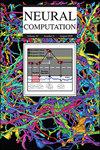Fast Multigroup Gaussian Process Factor Models
IF 2.1
4区 计算机科学
Q3 COMPUTER SCIENCE, ARTIFICIAL INTELLIGENCE
引用次数: 0
Abstract
Gaussian processes are now commonly used in dimensionality reduction approaches tailored to neuroscience, especially to describe changes in high-dimensional neural activity over time. As recording capabilities expand to include neuronal populations across multiple brain areas, cortical layers, and cell types, interest in extending gaussian process factor models to characterize multipopulation interactions has grown. However, the cubic runtime scaling of current methods with the length of experimental trials and the number of recorded populations (groups) precludes their application to large-scale multipopulation recordings. Here, we improve this scaling from cubic to linear in both trial length and group number. We present two approximate approaches to fitting multigroup gaussian process factor models based on inducing variables and the frequency domain. Empirically, both methods achieved orders of magnitude speed-up with minimal impact on statistical performance, in simulation and on neural recordings of hundreds of neurons across three brain areas. The frequency domain approach, in particular, consistently provided the greatest runtime benefits with the fewest trade-offs in statistical performance. We further characterize the estimation biases introduced by the frequency domain approach and demonstrate effective strategies to mitigate them. This work enables a powerful class of analysis techniques to keep pace with the growing scale of multipopulation recordings, opening new avenues for exploring brain function.快速多组高斯过程因子模型。
高斯过程现在通常用于神经科学的降维方法,特别是描述高维神经活动随时间的变化。随着记录能力扩展到包括跨多个脑区、皮层和细胞类型的神经元群,对扩展高斯过程因子模型以表征多种群相互作用的兴趣也在增长。然而,当前方法的三次运行时尺度与实验试验的长度和记录的种群(组)的数量限制了它们在大规模多种群记录中的应用。在这里,我们在试验长度和组数上都将这种缩放从三次改进为线性。提出了两种基于诱导变量和频域的多组高斯过程因子模型的近似拟合方法。从经验上看,这两种方法都实现了数量级的加速,而对统计性能、模拟和三个大脑区域数百个神经元的神经记录的影响最小。特别是频域方法,始终以最小的统计性能折衷提供最大的运行时收益。我们进一步描述了频域方法引入的估计偏差,并展示了有效的策略来减轻它们。这项工作使一类强大的分析技术能够跟上不断增长的多种群记录的步伐,为探索大脑功能开辟了新的途径。
本文章由计算机程序翻译,如有差异,请以英文原文为准。
求助全文
约1分钟内获得全文
求助全文
来源期刊

Neural Computation
工程技术-计算机:人工智能
CiteScore
6.30
自引率
3.40%
发文量
83
审稿时长
3.0 months
期刊介绍:
Neural Computation is uniquely positioned at the crossroads between neuroscience and TMCS and welcomes the submission of original papers from all areas of TMCS, including: Advanced experimental design; Analysis of chemical sensor data; Connectomic reconstructions; Analysis of multielectrode and optical recordings; Genetic data for cell identity; Analysis of behavioral data; Multiscale models; Analysis of molecular mechanisms; Neuroinformatics; Analysis of brain imaging data; Neuromorphic engineering; Principles of neural coding, computation, circuit dynamics, and plasticity; Theories of brain function.
 求助内容:
求助内容: 应助结果提醒方式:
应助结果提醒方式:


